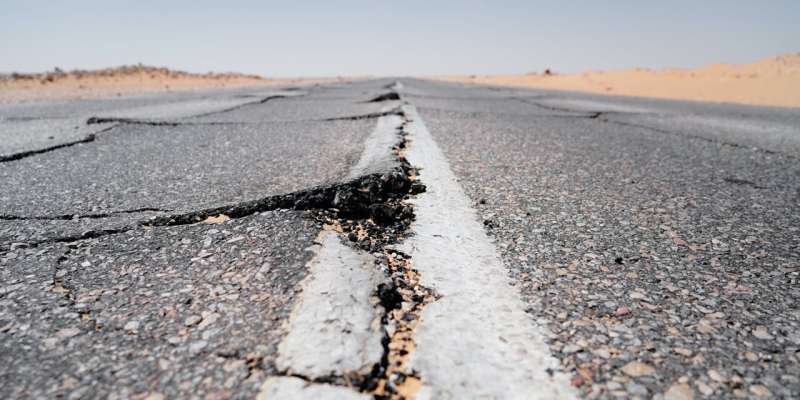Transportation recovery after disasters: A collaborative university/community model
September 1, 2022 by Nicole Masson
Policy/Legislative
Transportation recovery after disasters: A collaborative university/community model

Transportation systems play a critical role in maintaining supply chains for effective post-disaster recovery. The March 2020 COVID-19 lockdowns coincided with a 5.7 magnitude earthquake in Salt Lake City, Utah, resulting in supply chain disruptions throughout the region. A team of researchers collaborated with local agencies and transportation organizations to use this event and the community’s response to evaluate the challenges faced by local business owners and the actions they took to manage the disruptions. Their new report assesses the potential economic impacts of a catastrophic earthquake in the region of Salt Lake City, with an eye toward helping small and medium-sized businesses increase their resiliency.
- Increasing pre-disaster investment in resilient transportation infrastructure to reduce the cost of eventual recovery;
- Improving business resilience practices for high-impact industrial sectors, through education and outreach;
- Identifying structural barriers to adoption of resilient business practices, and promoting mitigation through recovery.
- Mainstreaming disaster resilience into economic development by breaking the siloed approach to emergency management and economic development.
Breaking the silos is key. A primary focus of this project was the developing of partnerships between the university, the community, and the transportation organizations and policy entities in the region. Partners on this project include the Utah Division of Emergency Management, the Wasatch Front Regional Council, the Utah Inland Port Authority, and the University of Utah.
Why do this research?
“The genesis of this project was a conversation that I had with some FEMA colleagues in Region 8 a few years ago, who were wondering about how we could do some more logistics-related research that would help them in their planning. The big question was, how do supply chains get affected when we have this big earthquake?” Chandrasekhar said.
According to the Utah Seismic Safety Commission, the Salt Lake City segment of the Wasatch Fault is overdue for a “Big One” (an M7.0 seismic event) which last occurred 1,400 years ago. In the aftermath of an earthquake of that magnitude, the Wasatch Front will likely experience a short-term economic loss of $33 billion, including $24.9 billion in direct buildings-related (capital) loss, $6.9 billion in income loss, and $1.4 billion in lifeline-related loss which includes transportation facilities.
Modeling the potential economic impact of transportation-related disruptions is an important step to promoting pre-event communitywide recovery and resilience planning. However, existing supply chain and economic impact models are cost prohibitive and overly sophisticated for use by public sector entities with limited resources. That’s why the UU team focused their efforts on small and medium enterprises, helping to increase our understanding of how these enterprises adjust to post-disaster transportation disruption and what they can do to prepare for similar events.
Apart from expanding our knowledge on the disaster resilience of small businesses, this study also develops an affordable analytical framework for planners and policymakers in high hazard-risk areas to use, to make data-driven decisions on transportation and economic resilience planning.
The research
In the first phase of the project, the team integrated results from three popularly used models (Hazus, the Wasatch Front Travel Demand Model, and REMI PI+) to identify the industrial sectors expected to be most impacted by transportation loss in a M7.0 earthquake scenario. They found that approximately 70% of the Wasatch Front regional economy falls into some of the hardest-hit sectors. Next they estimated travel delays, damage to roads and bridges, and other potential impacts on the regional economy. Detailed results from each analysis are available in chapter 2 of the final report.
In the second phase, the team surveyed 130 Salt Lake City businesses within the top 10 worst-affected industrial sectors identified in Phase 1 to understand how they are currently navigating supply disruptions due to COVID-19, and their future earthquake preparedness. Businesses reported significant impact to supply chain management and production cost due to the disasters. Utah businesses took a range of actions to manage these disruptions, including adjusting capital expenditures and diversifying suppliers within and outside the city. While the disaster experience had raised awareness and confidence in preparation for the future, most businesses reported taking few concrete actions in terms of mitigation and preparedness.
What can local businesses do?
Chandrasekhar identified several actions that small and medium businesses can take to mitigate against future disasters. Knowing your hazard risk and exposure is important, she says, and so is knowing the condition of your building. For example, many buildings in Utah have unreinforced masonry, which constitutes a severe risk.
Other actions include getting business interruption insurance; having a disaster plan in place (for example, a data recovery plan in the event of digital data loss); and being familiar with your own supply chain: knowing where your goods come from and what can affect their travel. Chandrasekhar also advises businesses to take advantage of the resources that local and state agencies can offer. For example, the Utah Governor’s Office of Economic Opportunity and the Be Ready Utah initiative offer assistance in business continuity planning for disasters, an opportunity which many business owners may not be aware of.
The study highlights the need for high hazard risk communities to identify at-risk industrial sectors and do targeted disaster management outreach and awareness raising in these sectors.
https://phys.org/news/2022-08-recovery-disasters-collaborative-universitycommunity.html
Recent News
- » Planning In The News: Will Utah home prices drop as a result of the ‘silver tsunami’?
- » 2024 APA UT Spring Conference: Cedar City, UT. The Call For Sessions is Currently Open.
- » Planning in the news: Living in Daybreak- What residents say the Utah community is really like
- » Planning In The News: Planning Commission green lights proposed ban on gas stations near waterways and parks
- » As states argue over who should cut their Colorado River use, a new plan puts the environment first
- » Developer planned the demolition of the historic Fifth Ward meetinghouse
- » Long-awaited ‘River Tunnel’ at SLC Airport gets sneak peek

































